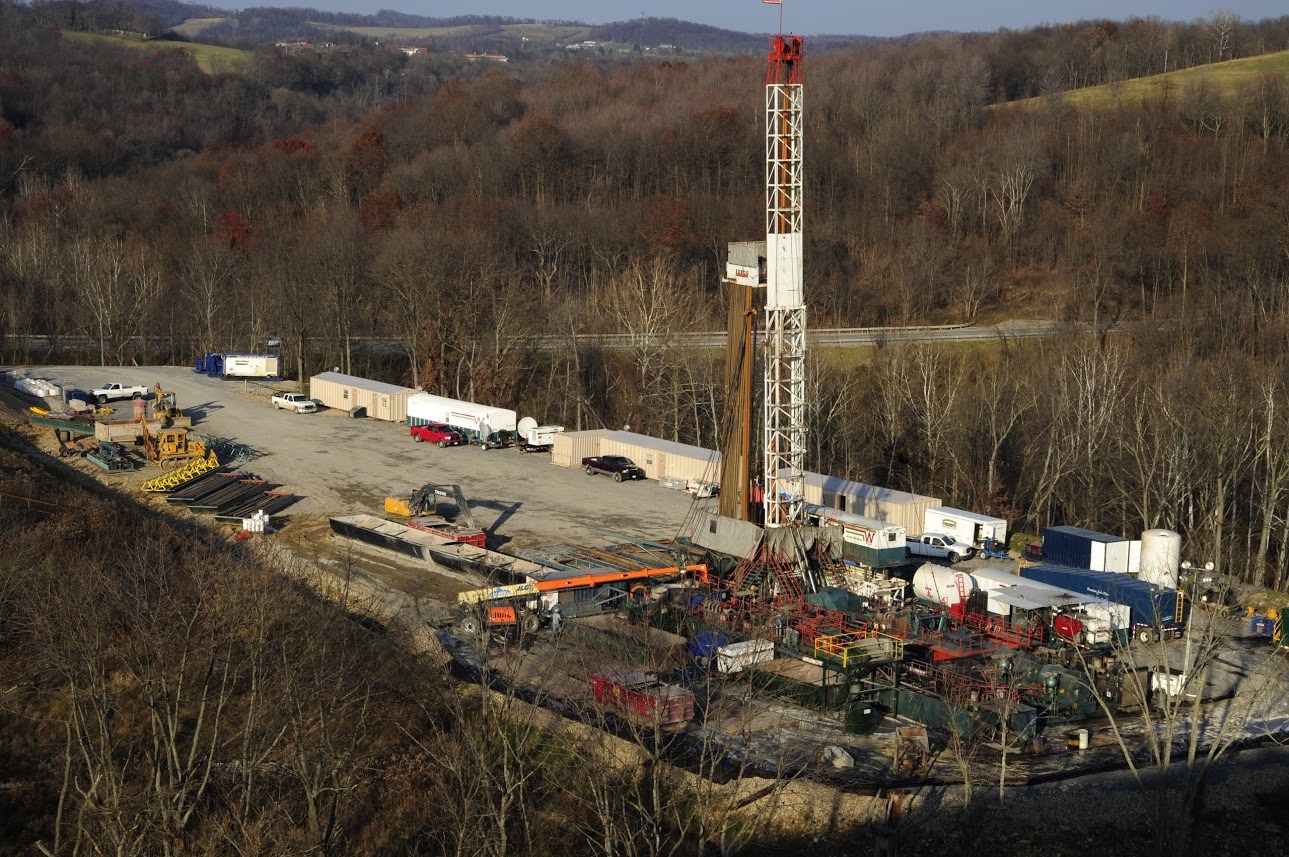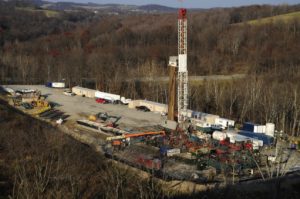
PENNSYLVANIA (July 9, 2024) – Today, the U.S. Court of Appeals for the D.C. Circuit blocked the attempt by several states, along with oil and gas trade associations, to stay, or block, the Environmental Protection Agency’s (EPA) methane standards for the oil and gas industry. Methane, more than 80 times more potent than carbon dioxide over the short term, is a critical target for climate pollution emissions reduction efforts. Human-caused methane emissions currently account for about 30 percent of global warming, with the oil and gas industry being one of the largest sources of methane emissions. The EPA standards would prevent millions of tons of climate warming methane from being emitted. In Pennsylvania, nearly 2 million residents live in proximity to oil and gas operations.
Matt Walker, Clean Air Council Advocacy Director, issued the following statement:
“The court’s decision ensures that EPA’s much-needed methane standards can continue to move forward, better protecting the health of Pennsylvania residents living close to oil and gas operations, and cutting methane at a time when our country is experiencing the dire effects of climate change.”
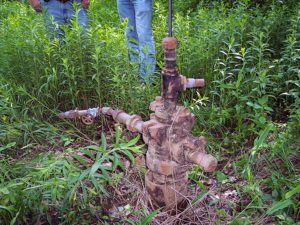
PENNSYLVANIA (April 22, 2024) – Last week, the federal government finalized a significant rule that increases minimum bonding amounts from $10,000 to $150,000 per oil and gas lease on federal land. Well bond amounts are the money that drilling companies have to put aside for eventual cleanup and plugging before being allowed to drill a new well. However, when bond amounts are less than the actual cost of plugging, taxpayers are left responsible for cleanup costs when companies go out of business and abandon their well. With over 130,000 documented orphaned wells in the United States polluting the environment and harming community health—and new wells being drilled every day without adequate bonding—this increase was long overdue.
“In raising federal lease bond amounts to reflect actual cleanup costs, the federal government is taking an important step to protect both taxpayers and the environment,” said Alex Bomstein, Executive Director of the Clean Air Council. “But while the rest of the country moves forward, Pennsylvania has regressed. In 2022, the Pennsylvania legislature passed Act 96, which capped the bond amount for conventional wells at a pittance of $2,500 per well, far below the actual cost. To protect Pennsylvanians, the Council and our partners are pursuing a joint lawsuit asking the court to rule Act 96 unconstitutional under the Environmental Rights Amendment. The federal government’s decision this month underscores how Pennsylvania’s well bonding system is broken and sacrifices community health and taxpayer dollars.”
“In updating its bonding amount, BLM is acknowledging that the current amount established more than 60 years ago was insufficient to cover the costs of cleaning up abandoned wells. This will save taxpayers from the burden of reclaiming wells after oil and gas companies neglect to clean up their polluting mess. This change reflects the reality of how expensive it is to protect people’s health and the environment from abandoned wells. We’re just asking Pennsylvania leaders to reach the same commonsense conclusions,” said Kelsey Krepps, Senior Field Organizer at Sierra Club.

WASHINGTON, D.C. (December 2, 2023) – The U.S. Environmental Protection Agency (EPA) has finalized methane pollution standards for new and existing oil and gas facilities that include gas wells, compressor stations and storage tanks. These updated environmental regulations will increase required air pollution inspections at oil and gas facilities while requiring widely available control technologies that do not emit climate-warming methane gas directly to the atmosphere. Methane has 87 times the global warming potential of carbon dioxide over a 20-year time period.
Additionally, this rule will require reducing smog-causing volatile organic compound (VOC) emissions as well as air toxic emissions like the known carcinogen benzene. The rule will also include a Super-Emitter Response Program that will provide information regarding air pollution incidents, and their resolutions, to impacted communities.
Joseph Otis Minott, Clean Air Council Executive Director and Chief Counsel issued the following statement:
“President Biden and the EPA are taking meaningful action with rules that set a strong foundation for cutting methane pollution from new and existing oil and gas operations. We look forward to supporting Governor Shapiro in tailoring these rules to ensure they adequately address the concerns of Pennsylvania residents near gas operations. As the second largest producer of fossil gas in the country, Pennsylvania has an outsized responsibility to cut as much climate-warming methane emissions from the gas industry as possible and better protect the health of people living near oil and gas operations.”

HARRISBURG, PA (October 30, 2023)– Today, a number of speakers from environmental and public health organizations, as well as academia and industry gave testimony about House Bill 170 to members of the House Environmental Resources and Energy Committee and the public. In HB 170, a setback or buffer refers to the minimum required distance between various oil and gas industry infrastructure, like fracking wells, a specific use (shale gas well pad) and an existing structure, boundary, natural resource, or any other area that needs protection in the interest of health, safety, and the general welfare of the public. Five speakers called for increased protective buffers, or setbacks, from oil and gas infrastructure. The two industry-related speakers were not supportive of the current bill, but were open to further discussions about increased setback distances. Right now, oil and gas infrastructure is allowed within an easily waived 500 feet of homes, schools, and buildings, but testifiers supported House Bill 170 and recommended that operations be moved back to at least 2,500 feet between unconventional wells and buildings, as well as greater distances for schools, nursing homes, hospitals, and places that serve people with intellectual or developmental disabilities. Twenty Pennsylvania environmental and health organizations submitted a written comment supporting the bill. The Protective Buffers Coalition, comprised of some of those same organizations, have long called for even greater distances and setbacks and from additional gas-related infrastructure.
“There is broad support for increased setback distances between gas infrastructure and Pennsylvania residents,” said Lois Bower-Bjornson, Washington County Resident, Clean Air Council. “A 2021 poll conducted by Data for Progress showed that Pennsylvanians support increased setback distances between gas infrastructure and homes, schools, hospitals, childcare centers, and other residential buildings by a 60% margin. Since 2021, Clean Air Council and partners have assisted 4,392 Pennsylvania residents in expressing their support for increased setbacks to their local elected officials.”
Recent health studies found that people living in close proximity to oil and gas infrastructure are at risk for a host of health issues including cancer, respiratory disease, low birth weight, and cardiovascular disease. By creating larger setbacks, or buffers, Pennsylvanians will be protected from harmful pollutants like benzene, hydrogen sulfide, and carbon disulfide.
“It’s clear that a 500 foot buffer from homes, childcare centers, schools, businesses, hospitals, and nursing homes is way too small, said Ned Ketyer, MD, President of Pennsylvania Physicians for Social Responsibility. “Increasing the distance between the activity and where people (especially children) live, work, learn, and play is only one step, but an important one, to protect the health of Pennsylvanians from dangerous fracking emissions consisting of fine particulate matter (PM2.5), volatile organic compounds (VOCs like benzene, toluene, and formaldehyde), ozone-forming nitrogen oxides, heat-trapping methane, radon gas, and many other toxics.”
“We observed elevated odds of cancer associated with UOG (unconventional oil and gas) activity within 2 km (more than 6,560 ft), which far exceeds any existing setback distance,” said Cassandra Clark, PhD, Postdoctoral Fellow, Yale School of Public Health. “Further, although effect sizes diminished with increasing buffer size, the odds of developing ALL (acute lymphoblastic leukemia) were still elevated for children living within 5 and 10 km of UOGD. Our results in the context of the broader environmental and epidemiologic literature suggest that existing setback distances are insufficiently public health protective, particularly for vulnerable populations like children, and should be revisited and informed by more recent data.”
“The optical gas imaging footage Earthworks has captured shows air pollution from unconventional oil and gas development regularly goes beyond facility fencelines,” said Melissa Ostroff, MPH, Earthworks Pennsylvania Policy and Field Advocate. “While this pollution is not visible to the naked eye, our camera provides visual evidence that communities living in close proximity to well pads and other fracking infrastructure are breathing in pollution from the industry. Policymakers must take this reality into account by increasing setback distances for oil and gas facilities.”

Chester County, PA (August 16, 2022) — Highly volatile hazardous liquids surge through the Mariner East pipeline system as it snakes through over 300 miles of Pennsylvania’s land. It passes by schools, under farms, and across streams. Existing lax regulations could not prevent Sunoco Pipeline L.P.’s reckless construction practices from creating sinkholes by homes and train tracks and contaminating residential water supplies, nor make Sunoco provide basic safety information to schools and communities in the zones threatened by potentially catastrophic leaks or explosions.
The Council, other local health and environmental groups, and impacted residents have worked tirelessly for years to protect the public and hold Sunoco accountable. We now applaud the Public Utility Commission (PUC) for stepping up with proposed common-sense rules to reduce the threat from hazardous liquid pipelines. Sunoco and other industry actors are trying to block the PUC’s proposed safety regulations, but the Council is meeting them at every turn, fighting Sunoco in court when local communities sue for relief, amplifying the voices of the public, and supporting the PUC’s invaluable efforts.
One of the most important proposed regulations would help prevent sinkholes and potential pipeline ruptures by requiring pipeline builders to look at the geology of a site before starting construction. Pennsylvania’s unique geology includes unstable limestone formations, called karst. These pipelines carry volatile gasses that are compressed under great pressure into liquid. If the pipelines rupture, heavier-than-air gasses would rapidly blanket the surrounding area, potentially suffocating anyone in range, and the slightest spark could ignite the highly flammable gasses. So, it seems obvious to avoid building where the ground might crumble away, leaving the pipeline unsupported. Yet Sunoco historically neglected to adequately check its construction sites, too often with disastrous results, and now fights this necessary rule.
The PUC also wants to require pipeline operators to provide local officials and emergency responders with the information they need to protect their communities in the event of an accident. The Council strongly supports providing all the information needed to local officials charged with protecting schools in the potential impact zone of a pipeline leak or other accidents. Previously, Sunoco provided such limited information to local community members that it left them quite unprepared for a pipeline disaster. For instance, the company left residents confused about when they should call “911” because a cell phone might produce a catastrophic spark.
The Legal Exposition
Buckle in for some legal exposition identifying what has happened and what still needs to happen before PUC’s proposed safety rules start protecting Pennsylvanians. Administrative regulations like these must go through several steps before being finalized, including opportunity for the public to submit comments. Here, the PUC decided to also invite a second round of comments to allow members of the public to respond to each others’ initial remarks. The rulemaking attracted comments from a wide range of interested parties, ranging from residents to local government officials to the American Petroleum Institute (the national trade association for the fossil fuel industry), and, of course, Sunoco.
In addition to raising public awareness during this process, the Council led a coalition of other knowledgeable public advocacy groups in drafting comments which (1) supported the PUC’s authority; (2) suggested ways to strengthen the proposed rules, including grounding the regulations in well established industry “best practices” which are too often ignored; and (3) bolstered the voices of local communities. In the second round, our coalition refuted the many baseless objections raised by Sunoco and their allies and provided further support for the concerns of local governments and nearby residents.
The comments and the proposed rules were then reviewed by Pennsylvania’s Independent Regulatory Review Commission (IRCC), as is standard. IRCC then prepared its own comments, referencing public comments and asking the PUC to conduct additional analysis.
What are the next steps
PUC must consider and publish a response to all of the comments before drafting a final form of the rules which it needs to send back to the IRCC. The PUC has two years from when the public comment period closed to complete the process, which makes the deadline May 12, 2024. IRCC will then discuss the rules at a public hearing and vote on whether the rules are “in the public interest.”
In the meantime, Clean Air Council will be part of the bulwark protecting the communities that brought successful challenges to some Sunoco’s harmful practices. Sunoco’s legal challenges to the PUC’s orders that resulted, combined with their public comments to the rulemaking, foreshadow their likely future judicial challenges to the safety rules. For instance, Pennsylvania law charges the PUC with ensuring that public utilities are operated safely and efficiently, making “every reasonable effort to warn and protect the public” from potential dangers. Sunoco argued strenuously for public utility status for its hazardous liquid pipelines because that allowed it to use the power of eminent domain to condemn private property to build its pipelines. Now it argues in public comments and in court that it should not need to accept the associated responsibilities. Astoundingly, in fighting these regulations Sunoco is essentially claiming that, in the event of a Sunoco-created pipeline emergency, it would be an unreasonable effort for Sunoco to 1) warn the officials in charge of keeping nearby school children safe, and 2) provide basic information public officials need to develop emergency-response plans to protect the children and others.
Clean Air Council will not let such claims stand. The Council will continue to fight Sunoco’s obstructionist, irresponsible behavior in court and through the regulatory process. It looks forward to reporting when the PUC’s new regulations are finalized and begin making Pennsylvania safer.
For more information, contact Annie Fox, Law Clerk at afox@cleanair.org.
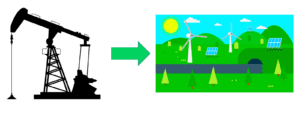
Sean Deresh is an undergraduate student in the Vagelos Integrated Program in Energy Research studying Earth Science in the College of Arts and Sciences and Chemical and Biomolecular Engineering in the School of Engineering and Applied Science at the University of Pennsylvania. He is a volunteer advocate with the Clean Air Council, a member of Penn Sustainability’s Student Advisory Group for the Environment, and a research assistant at Penn’s Kleinman Center for Energy Policy.
Sean is interested in the future direction of the global oil market and what factors might help reduce our reliance on oil as a primary energy source.
Recent fluctuations of the oil industry: a call for energy policies that embrace renewable development
Given the magnitude of the impending effects of climate change, many sectors have begun to explore alternative avenues for energy consumption that either reduce or eliminate greenhouse gas emissions. Crude oil, one of the primary fossil fuels, has proven to become a driving force in the US energy industry due to its high energy density and low cost. The current US energy policy landscape is still in a transitional phase, and as the Biden administration continues to set goals for expanding renewable energy supply in the US, it is only a matter of time before oil dependency is minimized. The volatility of the global oil market due to drastic fluctuations in supply and demand and recent geopolitical tensions are clear indicators that energy policy must be restructured to help foster a landscape that is not so dependent on oil and can withstand potential changes in energy resource supply. Oil prices are currently hovering around $100 per barrel due to a combination of upward pricing pressure on concerns of reduced Russian oil supply and fears of a renewed COVID-19 economic attenuation in China24. A decline in US oil inventories is putting even more pressure on the price of oil as the nation’s strategic reserve is depleted and the Russia-Ukraine war continues. Through time, mass electrification will inevitably emerge as one of the primary solutions to high gas prices, as global oil trends favor enhanced clean development.
The current dilemma
The balance of international power is a key factor in the oil industry, with the future fortunes of countries such as Russia and Iran tied to crude oil. Geopolitical tensions and the disparity between supply and demand have led to an increase in the price of crude oil. Prices increased by more than 15% in January, as the global benchmark price crossed $90/b for the first time in over seven years, as fears of Russian invasions in Ukraine grew14. Upon the Russian invasion of Ukraine, the price of crude oil rose to nearly $96/bbl and Brent crude — the global benchmark for oil prices — went as high as $105.79 for the front-month contract20. The tension between Russia and the West is growing and President Putin is willing to take geopolitical risks to assert his power. If Russian production is interrupted, the US, Japan, European countries, and China could release mode crude oil from their reserves in the event of a crisis. This invasion has caused many entities such as the EIA and investment banking firms to increase their oil price predictions.
Energy experts and E.U. Officials have expressed that Russia’s invasion of Ukraine is poised to add more urgency to Europe’s efforts to reduce its dependence on Russian oil and gas and to compel Europe to speed up its transition to renewable energy. Discussions of accelerating the transition toward alternative sources of energy began months ago as oil and gas prices began to rise and recently intensified as tensions grew closer to war with Russia. The recent invasion of Ukraine then increased the risk of Europe’s reliance on Russian gas. For instance, Germany, which has been ramping up its wind and solar capacity and shuttered coal-fired and nuclear facilities, has viewed natural gas as a reliable fuel that can get the country through the transition. However, Germany currently receives about half of its gas supply through pipelines from Russia and does not have the infrastructure to take shipments of liquefied natural gas (LNG) from other sources. As Russia’s gas flows have slowed, Germany’s feeling of reliability has shifted.
The energy transition will be easier for some countries in Europe than others. Some countries could actually return to polluting fuels such as coal-reliant Poland, as renewables still have a long way to go there and it might not seem feasible to meet demand amidst such heightened geopolitical tensions and risks. If the alternative is to stay on course with decarbonization at the expense of high energy prices or vulnerability, this will be hard to achieve, and compromises that will soften climate ambitions set out by the E.U. will have to be established. A European gap without gas could mean relying more on coal and sources such as nuclear by bringing them back online or reducing demand among households and the industry. An E.U. plan to tax carbon-intensive imported goods could have costly impacts on countries such as China and Russia, which have weaker environmental regulations. Absolutely everything could change if the invasion expands beyond Ukraine, and depending on how long this conflict lasts, it could affect U.N. climate talks when countries revise goals for reducing emissions. Geopolitical tensions could drive Russia toward China or even into isolation. If sanctions affect Russia’s access to the markets in the West, they will have to seek other economic opportunities. Losing Europe as a major customer would leave Russia with few options to sell its gas in the short term.
The crude oil landscape
In recent years, American consumers have been facing a sustained increase in prices for oil products1. As a global commodity and primary source of fuel for the global economy, crude oil has a price that is determined by both supply and demand, reflects buyer-seller interactions1, and has recently experienced an unprecedented shift amidst the COVID-19 pandemic. The primary activities required to move crude oil from source to consumer include production, refining, distribution, and marketing1, and such activities take place in the global marketplace. The world currently consumes over 97 million barrels of oil per day2, and its proven reserves are equivalent to 46.6 times its annual consumption levels, suggesting that planet Earth has 47 years of oil left under current consumption rates2. This would be the equivalent of going above and beyond the “business as usual” emissions scenario of global circulation models, resulting in the strongest possible set of climate change effects18.
The global oil market is complex. Various countries currently produce oil, but only a few of them dominate production3. Nearly 100 countries produce crude oil around the globe, but in 2020, only five of them accounted for 50% of the world’s total crude oil production: United States with 15%, Russia with 13%, Saudi Arabia with 12%, Iraq with 6%, and Canada with 5%4. There are three types of companies that supply crude oil in the global market4. International oil companies (IOCs) such as ExxonMobil, BP, and Royal Dutch are investor-owned. National oil companies (NOCs) are extensions of government or government agencies and include companies such as Saudi Aramco (Saudi Arabia), Pemex (Mexico), the China National Petroleum Corporation (CNPC), etc. The Organization of Petroleum Exporting Countries (OPEC), an international cartel of oil-producing countries, is the most powerful production-level entity. In 2020, OPEC’s members held 71% of the world’s total proven crude oil reserves and accounted for 36% of total world crude oil production4.
Crude oil is bought and sold throughout a chain of distribution and its price is a function of supply and demand conditions, which are more important in determining the price of oil than trade flows in the long term. Recent changes in supply and demand have increased the prices paid by retailers and consumers for crude oil.
Looking ahead
The burning of gasoline and diesel are primary forces for global warming. As the years progress, the world will indubitably continue to perpetuate the transition toward clean energy sources and reduce its reliance on oil. Fortunes could be made or lost from shifts in the energy economy, which is controlled by some of the largest private and state corporations in the world. Oil companies will be at the forefront of change and undercut their own businesses. Regardless, there are still clear indications that the global demand for oil will peak and decline by the late 2030s11.
Electric vehicles certainly have the potential to drive the crude oil market towards a new trend against its perpetuation as an energy source. Federal transportation and energy officials recently detailed where the first millions of the government’s $7.5 billion funding for electric vehicle charging infrastructure will go, laying the foundation of a system that could establish where Americans fuel for decades to come19.
Western oil companies, under pressure from investors and environmental activism, are drilling less oil wells than before the pandemic restrained supply increases. Biden has been urging OPEC to pump more oil, and OPEC’s members and their allies have recently agreed to plan to increase production14. The Biden administration also announced that it would release 50 million barrels of oil from its strategic reserves to relieve pressure put on consumers. These recent calls for OPEC to increase production amidst increased demand is not consistent with his ideals of carbon neutrality and emissions reductions. The Biden administration continues to refuse to confront the oil industry even though it continues to develop at an outstanding pace. As the uncertainty of the future oil market grows given recent events, the Biden administration must consider environmental justice in its development of new initiatives to reduce the intensity of the instability of the oil industry.
Recent changes in supply and demand have increased the prices paid by retailers and consumers for crude oil. By the end of 2022, the price of crude oil will have increased due to the recovery from strained supply caused by the COVID-19 pandemic, the initiation of increased production from OPEC members, and tensions between foreign nations. Near 2030, oil demand will begin to peak as consumption growth diminishes and global inventories are greatly replenished, causing the price of crude oil to decrease. It might sound like a long time, but in the grand scheme of things it would be beneficial for the Biden administration to develop regulatory reforms that limit or inhibit oil extraction and development so as to initiate a decay in the Nation’s dependence on the source.
Energy policy outlook23
- We must develop novel energy policies that embrace renewable energy for electricity generation to achieve significant carbon pollution reductions by midcentury.
The US needs to do more to avert the impacts of climate change. Meeting climate goals will require the implementation of new policies that control emissions of carbon and other greenhouse gases. The US cannot simply rely on fossil fuels in the way it has in the past. By adopting sustainable policies, the US has the potential to generate a large portion of its electricity from zero-carbon emitting sources by the target dates. Strong domestic cooperation will be needed to facilitate international action. The US electricity sector is responsible for a large percentage of the nation’s carbon dioxide emissions. Long-term dependence on fossil fuels for power generation is incompatible with the response needed to mitigate the impacts of climate change. Renewable energy is booming but still lags behind traditional fuels. Policymakers must promote the rapid decarbonization of the power sector and the deployment of renewable energy technology.
- We must invest in safe, resilient, and reliable energy infrastructure.
Decisions that policymakers make today will last for decades to come. The modern electricity grid must accommodate expanded and diverse generation from renewable energy sources and provide reliable service. In the future, reliability will go hand in hand with ensuring that our energy infrastructure is resilient to the impacts of climate change, such as extreme weather. All energy infrastructure (pipelines, railroads, production facilities, etc.) should adhere to the highest standards of public safety so as to ensure proper climate action.
- We must reduce the transportation sector’s dependence on oil.
In order to meet the nation’s emission reduction goals, the US needs to continue to make cars and trucks cleaner and more efficient. The US should envision moving away from a transportation sector that is highly dependent on oil to one that relies on alternative energy sources, electricity being one of them. Manufacturers have already developed low-emission or zero-emission vehicles, and new technologies are appearing every year. Policymakers should provide consumers and governments with incentives to continue the transition to a cleaner transportation system.
- We must empower the energy consumer by ensuring equitable access to clean energy.
Energy policy is about more than supply and demand and market interactions. As technology and innovation change to the energy industry, consumers will have new opportunities to benefit from clean technologies to lower their energy costs. Consumers should be free to make sustainable energy decisions, such as installing solar panels or purchasing an electric car, without paying ridiculous fees that are designed to inhibit development. A clean energy economy must also be inclusive in that consumers from all income levels should have the opportunity to experience the benefits of clean energy technology.
- We must balance the impacts of energy production with the protections of citizens’ public lands and fair returns to taxpayers.
Oil and gas drilling, coal mining, and even renewable energy production in some cases, all have environmental costs associated with them. Policymakers should minimize these impacts by deciding which locations are appropriate for development and which are simply not feasible. Energy development should be balanced with protections for landscapes, the reinvestment of energy revenues in the conservation of land, water, and wildlife, and the enforcement of mitigation and reclamation requirements. Public lands and waters belong to all citizens, so taxpayers should be compensated for the extraction and development of their energy resources.
Email: sderesh@sas.upenn.edu
References
- Grant, Kenneth, et al. “Understanding Today’s Crude Oil and Product Markets.” Lexecon, an FTI Company, 2006, https://www.heartland.org/_template-assets/documents/publications/19500.pdf.
- “Oil Consumption by Country 2022.” World Population Review, https://worldpopulationreview.com/country-rankings/oil-consumption-by-country.
- “Frequently Asked Questions (FAQS).” U.S. Energy Information Administration (EIA), 8 Dec. 2021, https://www.eia.gov/tools/faqs/faq.php?id=709&%3Bt=6.
- “Oil and Petroleum Products Explained, Where Our Oil Comes From.” U.S. Energy Information Administration (EIA), 8 Apr. 2021, https://www.eia.gov/energyexplained/oil-and-petroleum-products/where-our-oil-comes-from.php.
- “Energy & Financial Markets: What Drives Crude Oil Prices?” U.S. Energy Information Administration (EIA), https://www.eia.gov/finance/markets/crudeoil/.
- “Short-Term Energy Outlook.” U.S. Energy Information Administration (EIA), 11 Jan. 2022, https://www.eia.gov/outlooks/steo/.
- “EIA Forecasts Crude Oil Prices Will Decline during 2022.” U.S. Energy Information Administration (EIA), 18 Nov. 2021, https://www.eia.gov/todayinenergy/detail.php?id=50396#:~:text=We%20expect%20that%20the%20price,%2462%2Fb%20in%20December%202022.
- “EIA Forecasts Crude Oil Prices Will Fall in 2022 and 2023.” U.S. Energy Information Administration (EIA), 12 Jan. 2022, https://www.eia.gov/todayinenergy/detail.php?id=50858#:~:text=In%20our%20January%202022%20Short,%2479%20per%20barrel%20(b).
- Shalett, Lisa. “Rising Oil Prices Pose Risks.” Morgan Stanley, 29 Apr. 2019, https://www.morganstanley.com/ideas/rising-oil-prices-pose-risks.
- Egan, Matt. “Oil Prices Will Surge to $100 This Year, Goldman Sachs Warns.” CNN, Cable News Network, 18 Jan. 2022, https://www.cnn.com/2022/01/18/energy/oil-prices/index.html.
- Krauss, Clifford. “Foretelling the Future of Oil.” The New York Times, The New York Times, 9 Oct. 2018, https://www.nytimes.com/2018/10/09/business/foretelling-the-future-of-oil.html.
- Rapier, Robert. “Saudi Arabia Proves That Oil Is Power.” Forbes, Forbes Magazine, 24 Oct. 2018, https://www.forbes.com/sites/rrapier/2018/10/24/saudi-arabia-proves-that-oil-is-power/?sh=6645fdf342e8.
- Neuhauser, Alan. “Why Oil Forecasts Keep Getting It Wrong | National News …” U.S. News, 25 Sept. 2018, https://www.usnews.com/news/national-news/articles/2018-09-25/why-oil-forecasts-keep-getting-it-wrong
- Krauss, Clifford. “Why Are Oil Prices So High and Will They Stay That Way?” The New York Times, 2 Feb. 2022, https://www.nytimes.com/2022/02/02/business/economy/oil-price.html.
- Urbi, Jaden. “Here’s What Drives the Price of Oil.” CNBC, 17 May 2018, https://www.cnbc.com/2018/05/15/what-drives-oil-prices.html.
- “Factors Influencing Crude Oil Price.” Factors Influencing Crude Oil Price | EBF 301: Global Finance for the Earth, Energy, and Materials Industries, Penn State College of Earth and Mineral Sciences, https://www.e-education.psu.edu/ebf301/node/752.
- “Oil Price Charts.” OilPrice.com, https://oilprice.com/oil-price-charts/#WTI-Crude.
- “20 Questions and Answers”. Climate Change Evidence and Causes, https://www.nap.edu/resource/25733/interactive/.
- “Biden Admin Details First Contours of EV Charging Network.” Subscriber.politicopro.com, https://subscriber.politicopro.com/article/eenews/2022/02/10/biden-admin-details-first-contours-of-ev-charging-network-00007610.
- Domonoske, Camila. “Oil Surges Past $100 a Barrel after Russia Invades Ukraine.” NPR, NPR, 24 Feb. 2022, https://www.npr.org/2022/02/24/1082571179/oil-surges-past-100-a-barrel-after-russia-invades-ukraine.
- U.S. Energy Information Administration – EIA – independent statistics and analysis. (2022, February 8). Retrieved March 4, 2022, from https://www.eia.gov/outlooks/steo/.
- Allen, N. (2022, March 18). Morgan Stanley Ups Oil Price Forecast, again. SeekingAlpha. https://seekingalpha.com/news/3814548-morgan-stanley-raises-oil-price-forecast-again.
- “Key Principles for an Energy Policy that Meets U.S. Environmental and Economic Needs” The Center for American Progress, 26 Oct. 2015.
- Rittmeyer, Brian. “Oil Market Volatility Brings End to Declining Gas Prices, Analysts Say”. TRIB Live. 25 April, 2022. https://triblive.com/local/regional/oil-market-volatility-brings-end-to-declining-gas-prices-analysts-say/.
Image sources:
https://www.maxpixel.net/Solar-Panel-Renewable-Energy-Sun-Renewable-Energy-3191780
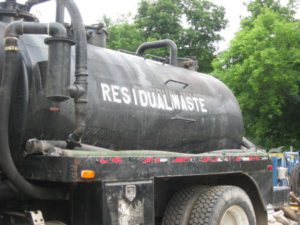
Photo: Iris Marie Bloom
Clean Air Council and its allies achieved a major victory in March in their efforts to ensure that the voices of Pennsylvanians are heard when it comes to fracking and the toxic waste it produces!
While many people know that the fracking industry pollutes the air and water, a lesser-known aspect of the process is how the industry handles and recirculates the toxic liquids fracking generates. When drilling a gas well, several different types of waste liquids need to be disposed of. First, there is “produced water,” which refers to a type of brine that comes up and out of the gas well from underground. Although it is naturally occurring, it is noxious and harmful if mixed with surface or groundwater. Next is “flowback,” which is the liquid that comes back up after being injected into the fracked well. This includes a chemical cocktail of fracking fluids and whatever happens to be picked up deep underground. Drilling fluid waste and other oil and gas liquids wastes also need to be dealt with.
The Pennsylvania Department of Environmental Protection allows gas companies to collect this waste in tanks and pits and then process and reuse it. Though DEP calls this “beneficial use,” the liquid wastes are used to frack more wells — and there is nothing beneficial about that. These dirty operations often spill their toxic waste and rack up violations.
DEP first created a general permitting process for these waste facilities a decade ago. Each permit issued then lasted ten years. As these permits were ready to expire at the close of 2020, the Department revised the general permit. Under the revised plan, the public would have notice of any proposals for waste facilities to be covered under the new permits and an opportunity to provide comments and feedback on those proposals.
However, once DEP finalized the general permit, it went right ahead and issued the approvals for almost all of the fracking waste facilities in Pennsylvania without giving the public a heads-up or opportunity to comment. All of a sudden, 49 facilities had the go-ahead to continue or expand their operations without neighbors or the broader public even having had a chance to review their plans to see if they are flawed or risky.
The environmental community in Pennsylvania came together and demanded that DEP reverse course and allow the public to weigh in on these plans for fracking waste facilities. Following up on that request, the Pittsburgh Post-Gazette on February 10 came out with an editorial calling on DEP to revoke the permits. Although DEP had not opened a comment period, groups still had the opportunity to appeal the permits within 30 days — which was coming up soon. Acting quickly, Clean Air Council joined with its allies to prepare to appeal as many permits as was necessary to ensure that flawed plans for fracking waste facilities would not go forward without scrutiny. The environmental groups and DEP put their heads together for negotiations and, on the eve of the permit appeal deadline, came to an agreement: DEP would provide the public with notice of all 49 permit applications and open up a comment period on all of them. And flaws the public brought to DEP’s attention would be corrected in modifications to the permits. Because the appeal period was closing, the environmental groups could continue ahead with appeals of six of the sites.
This great victory provides the public with the chance to weigh in which had previously been denied. The most recent edition of the Pennsylvania Bulletin announces the 60-day comment period for the waste sites and gives the public instruction on how to submit comments. You can click here and scroll down to “General Permit Coverage for Residual Waste General Permits” to submit your comments today!
Fracking waste storage sites are some of the dirtiest operations around. We’re proud to have been a key part of the effort to ensure that the gas industry didn’t get a pass due to DEP’s mistake. And we’re not done yet: we appealed those six permits, so there’s more fight to come!
For more information, contact Alex Bomstein, Senior Litigation Attorney, at abomstein@cleanair.org
